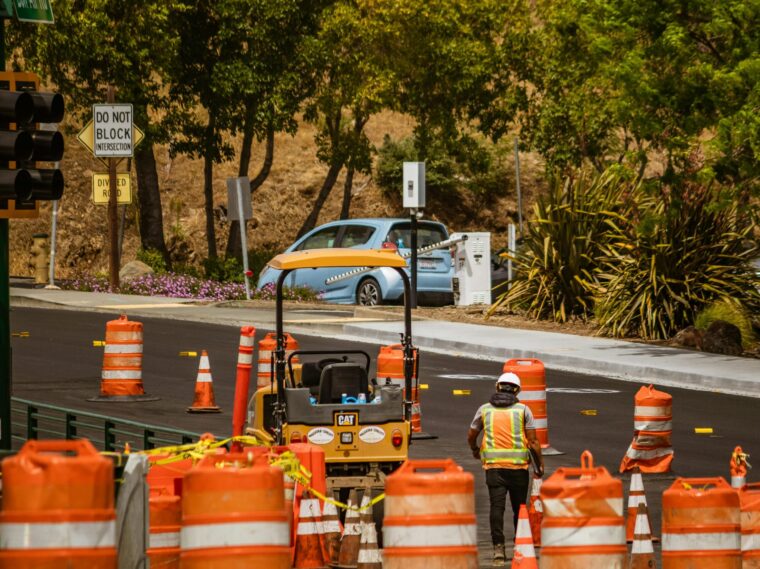
The government is taking steps to improve safety on road construction projects across America. The Federal Highway Administration has unveiled its first major update to work zone safety regulations in two decades, implementing new requirements for physical barriers and comprehensive safety reviews.
The updated version of the Work Zone Safety and Mobility Rule and Temporary Traffic Control Devices Rule will require states to use concrete barriers and other “positive protection devices” to shield workers from high-speed traffic during construction and maintenance operations. The regulations also encourage more data-driven programmatic reviews of work zone management.
RELATED: University of Cincinnati projects using AI, ‘smart’ hard hats to improve worker safety
The changes come as states prepare to manage increased road construction projects funded by the 2021 Infrastructure Investment and Jobs Act. With construction activities increasing across the country’s roadways, the need for enhanced safety measures has become more pressing. FHWA data shows that while highway workers face significant risks, four out of five work zone fatalities actually involve drivers or passengers rather than workers.
“This work zone safety rule took years in the making to engage communities, partners and public and private sectors to ensure we prioritize work zone safety and reduce congestion,” said Acting Federal Highway Administrator Kristin White, in a press release.
The updated regulations look to better protect both workers and travelers while minimizing traffic disruptions as states manage increased construction activity. Key changes include:
Requiring states to identify specific safety and mobility performance measures in their work zone policies
Extending the timeframe for comprehensive work zone programmatic reviews from every 2 years to every 5 years
Mandating annual performance monitoring of work zones
Clarifying criteria for significant projects on both Interstate and non-Interstate highways
Strengthening requirements for engineering studies that determine work zone safety measures
The new rule defines high-speed work zones as those with operating speeds of 45 mph or greater. Data shows these high-speed areas account for the majority of fatal work zone crashes, particularly on interstates and major arterial roads.
States will need to document their approach for selecting representative work zone projects for review based on factors like land use, roadway type and extent of impacts. The rule allows flexibility in how states implement these requirements while establishing clearer minimum standards.
For project planning, states must now conduct engineering studies to determine appropriate safety measures. These studies can range from simple checklists for short-term projects to comprehensive risk assessments for complex, long-term work zones.
FHWA will release support materials and conduct outreach over the coming months to help state agencies implement the new requirements. States may request exceptions for projects already in advanced development stages if the new requirements would significantly impact delivery.
Photo by Robert So
The post Feds update key safety rules for road construction projects appeared first on Government Market News.
